The world is full of natural beauty, and one of its most incredible creations is trees. Trees and forests play a vital role in the ecology of our planet. They are responsible for producing oxygen, reducing carbon dioxide, and helping to regulate the climate.
But beyond their ecological significance, trees are also a sight to behold with their different colors, shapes, textures, and sizes. In this article, we will explore some of the world’s most beautiful trees that have enchanted humans for centuries.
Maple Trees
When we talk about the most beautiful trees in the world, the maple tree comes first to mind for most people. The maple tree is a deciduous tree that grows in cool temperate regions of the world, such as Canada and the northeastern United States. Their leaves turn into a beautiful display of orange, yellow, and red colors in the fall season, making them a popular attraction for tourists
There are over 128 species of maple trees, and each species has its unique beauty. The sugar maple is the most widely known species, and its sap is used to make maple syrup, while the Japanese maple is known for its distinctive leaf shape and brilliant red colors. So, next time you stumble upon a maple tree or eat a delicious pancake doused with maple syrup, take a moment to appreciate nature’s incredible creation.
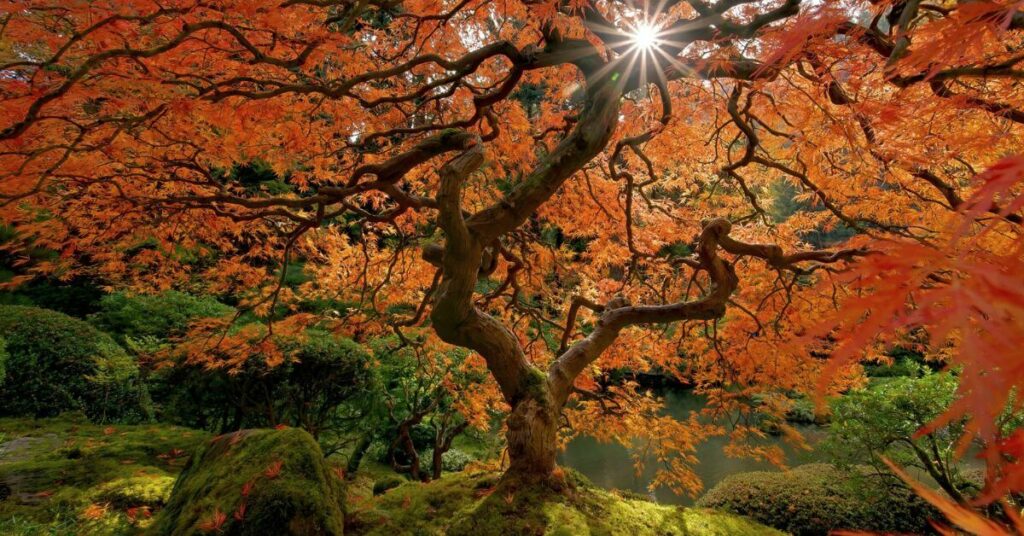
Baobab Trees
Stretching across the African landscape, the Baobab tree, possesses an awe-inspiring presence. It is often nicknamed the “upside-down tree” due to its root-like branches. And with a colossal trunk that can reach up to 80 feet in circumference, the Baobab tree can hold 30,000 gallons of water or more, depending on the species. This exceptional water-holding capacity allows the baobab tree to survive in arid and drought-prone regions where water availability is scarce. In addition to their size and water storing capacity, baobab trees have a unique feature: they bloom at night, with their large white flowers opening under the moonlight, creating a mesmerizing sight in the African landscape.
Beyond their fascinating physical features, baobab trees have rich cultural significance in many African communities. Revered as symbols of endurance and longevity, they are often regarded as sacred and are deeply woven into local folklore and traditions. The ancient trunks of baobabs tell stories of centuries past, as they can live for over a thousand years. These majestic trees also serve as important gathering places, offering shade and shelter from the scorching African sun. Moreover, baobabs provide sustenance to both wildlife and humans alike, as their fruit is highly nutritious and filled with essential vitamins. With their captivating presence and multifaceted significance, baobab trees stand as living testaments to the extraordinary beauty that can be found in nature.
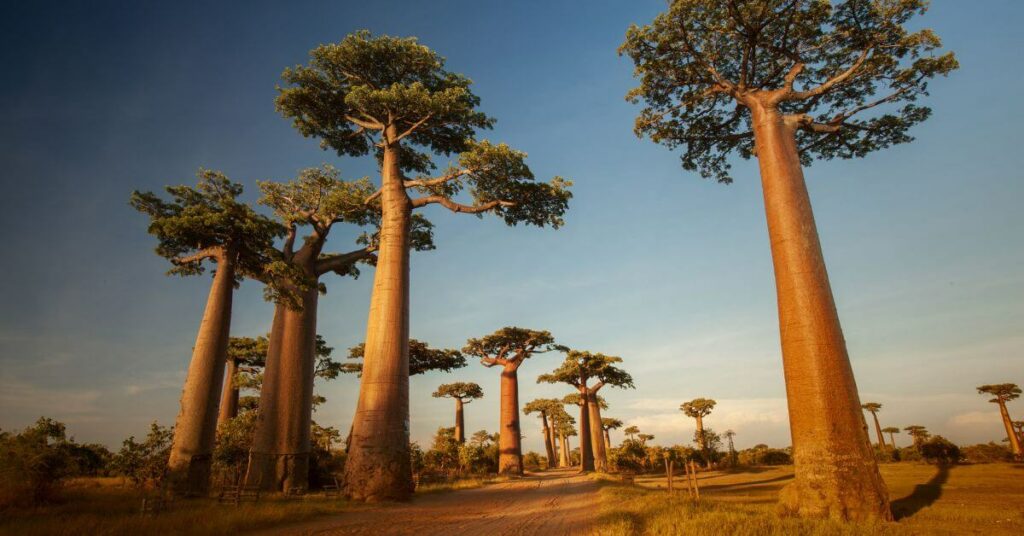
Rainbow Eucalyptus Trees
As a living, breathing, real-life version of Van Gogh’s paintings, the rainbow eucalyptus – and its rainbow-colored bark – is one of the prettiest trees in the world. It is the only eucalyptus tree to grow in the rainforest, as it thrives in the rainy climates of places like New Guinea, Indonesia, and the Philippine Islands, where it can soar up to 250 feet in the air. While its height is impressive, it’s really the tree’s colorful bark that makes it stand out.
The bark peels over time, gradually revealing a bright green color beneath. Once exposed, those areas morph into other vibrant colors such as blue, purple, red, and maroon. This remarkable phenomenon is attributed to the presence of chlorophyll, tannins, and other pigments within the bark. The rainbow eucalyptus, with its ethereal beauty and ever-changing hues, unveils nature’s mastery as a sublime artist, painting the world with vibrant strokes of color that leave us humbled by its boundless creativity.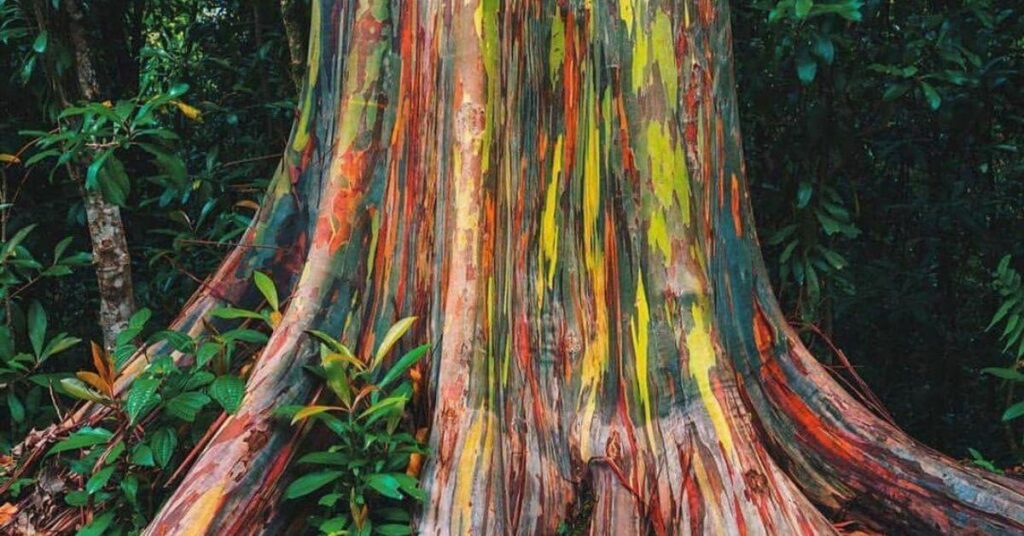
Cherry Blossom Trees
Cherry blossom trees are a mesmerizing botanical marvel renowned for their captivating beauty. Originating from East Asia, these deciduous trees belong to the rose family (Rosaceae) and are celebrated for their short-lived yet magnificent floral display. The blossoms, consisting of five delicate petals, typically range in color from pale pink to vibrant magenta, although white and yellow varieties also exist. The phenomenon of cherry blossoms is tightly linked to the changing seasons, as these trees bloom in early spring, usually lasting one to two weeks. The synchronized blooming not only creates a stunning visual spectacle but also attracts a myriad of pollinators, including bees and butterflies, essential for the tree’s reproductive success.
Furthermore, the cultural significance of cherry blossom trees adds another layer of interest to these botanical wonders. In Japan, the annual bloom of cherry blossoms, known as “sakura,” holds deep cultural and historical importance. It is celebrated with hanami, the tradition of enjoying outdoor picnics and gatherings beneath the blossoming trees. This centuries-old custom symbolizes the ephemeral nature of life and the beauty of transience. The cherry blossoms have become an enduring symbol of renewal, hope, and the fleeting nature of existence, captivating the imagination and hearts of people worldwide.
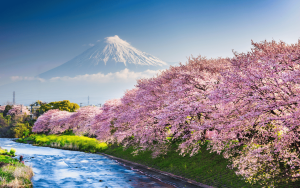
Dragon’s Blood Trees
Tucked away on the island of Socotra in Yemen, the Dragon’s Blood Tree is a mystical and otherworldly sight to behold. This unusual-looking tree has a thick, bottle-shaped trunk with gnarled branches that spread out like an umbrella. However, it is their most distinctive feature that truly sets them apart—the crimson resin that oozes from their bark. This red sap has been used for centuries, including dyes, medicine, and incense. As the ancient stories and practical applications of Dragon’s Blood Tree’s resin weave through time, the remarkable adaptations of these trees continue to shape Socotra’s unique landscape.
Dragon’s Blood Trees have adapted remarkably to thrive in Socotra’s harsh and unforgiving environment, serving as both survivors and architects of their ecosystem. These remarkable trees have evolved to withstand scorching temperatures, strong winds, and arid conditions by employing a suite of adaptive features. Their umbrella-like crown helps to minimize water loss by reducing direct exposure to the sun, while their dense network of deep roots efficiently taps into underground water sources. In addition to providing shade and shelter to other plant species and wildlife, the Dragon’s Blood Trees create a habitat oasis supporting diverse organisms in this otherwise barren landscape. Amidst the arid beauty of Socotra, Dragon’s Blood Trees stand as living relics, captivating the imagination and reminding us of nature’s remarkable ability to adapt and thrive against all odds.
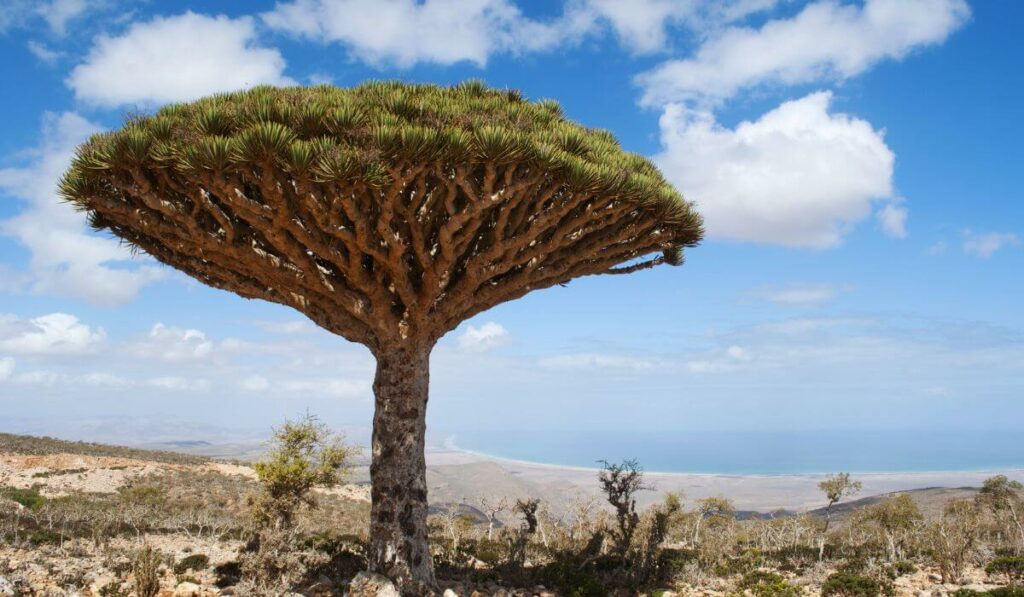
Redwood Trees
Redwood trees stand as towering giants in the realm of botany, captivating the imagination with their sheer size and age. These magnificent conifers, native to the coastal regions of California, are known for their remarkable height, often reaching astonishing heights of over 300 feet (91 meters). In fact, redwoods hold the title for being the tallest trees on Earth, their lofty crowns seemingly touching the sky; these natural skyscrapers can grow up to the height of the Statue of Liberty. Beyond their incredible height, redwoods boast colossal girths, with trunk diameters that can exceed 20 feet (6 meters). This combination of impressive stature and immense size makes redwoods a true testament to the awe-inspiring power of nature.
One of the most astounding aspects of redwood trees is their extraordinary lifespan, as they are among the longest-living organisms on our planet. Some individuals have been estimated to have lived for over 2,000 years, with the oldest known redwood reaching an age of approximately 3,200 years. These ancient arboreal marvels have witnessed countless generations come and go, standing as living witnesses to the passage of time. With their incredible longevity, redwoods embody resilience and serve as a poignant reminder of the enduring power of nature. These trees have survived natural disasters, climate shifts, and human impacts, standing as stoic sentinels that have weathered the test of time and inspire us with their longevity and strength.
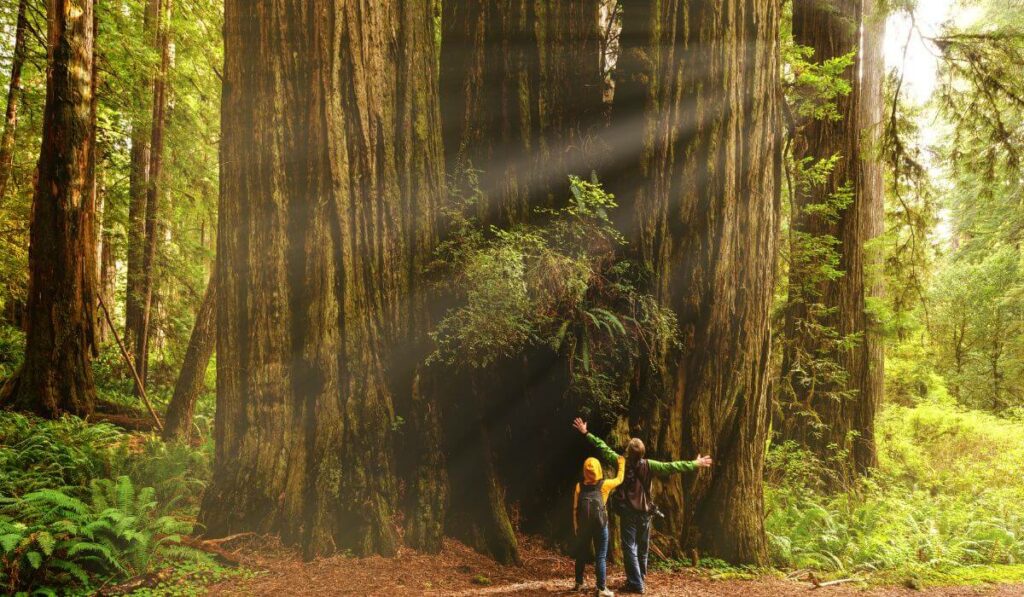
Samaúma Trees
The samaúma tree, also called the kapok, is one of the largest and tallest of the Amazon Rainforest. Locals refer to it as the ‘grandmother tree,’ and indigenous people used to bury their dead in urns among the roots. They also use the tree like a drum to communicate with others in the forest. This tree was so important to ancient people that they even created the right conditions for it to grow in different parts of the Amazon.
Furthermore, indigenous cultures have utilized various parts of the Samaúma tree for practical purposes. The lightweight kapok fibers found within its pods have been traditionally used for crafting pillows, mattresses, and other items due to their buoyancy and insulation properties. The bark and leaves of the Samaúma tree have also been utilized for medicinal purposes, as indigenous peoples have passed down their knowledge of its healing properties from generation to generation.
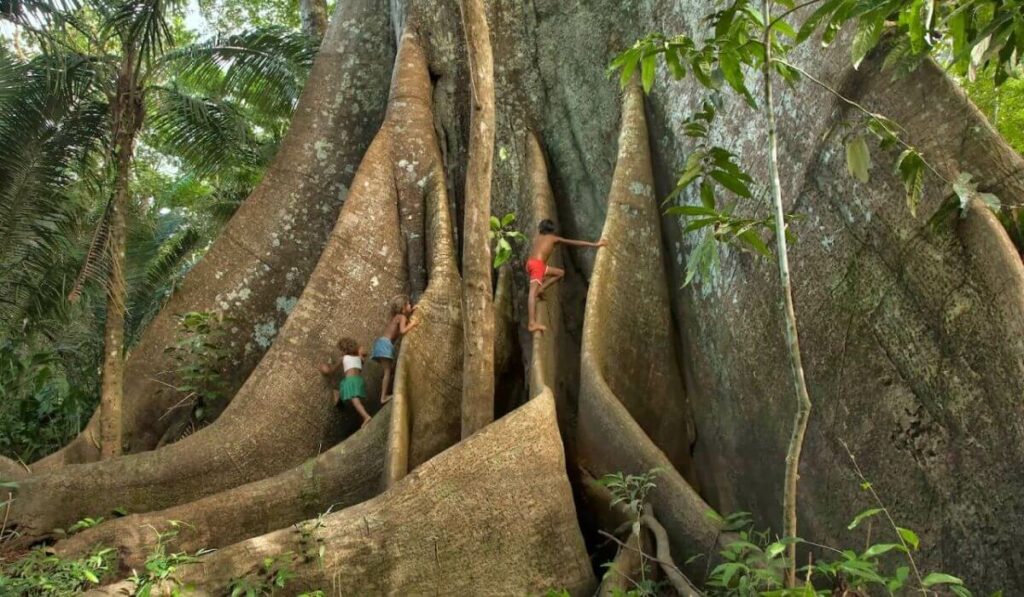
To Sum It All Up
Trees are an essential aspect of our natural world, and their beauty is unparalleled. Whether it is the fiery colors of the maple tree, the delicate pink petals of the cherry blossom tree, or the towering height of the redwood tree, each species of tree has its unique charm. Trees provide us with oxygen, clean the air, and absorb carbon dioxide, making them crucial to our existence. They also benefit our mind and body. As we look to protect our environment, let us not forget the beauty of trees and the vital role they play on our planet.
How You Can Help Trees Today
Even though trees have boundless beauty and purpose, trees are in danger. Deforestation has increased, having devastating consequences for the climate, ecosystems, the people, and their traditions. We must do all we can to Stand For Trees now. With your support, we can make a meaningful difference and ensure the survival of these stunning treasures. Every dollar counts – for just $1, you can help save a breathtaking tree. Be part of the movement to protect and cherish our world’s most beautiful trees. Together, let’s create a legacy of natural wonders that will inspire and enchant for years to come.



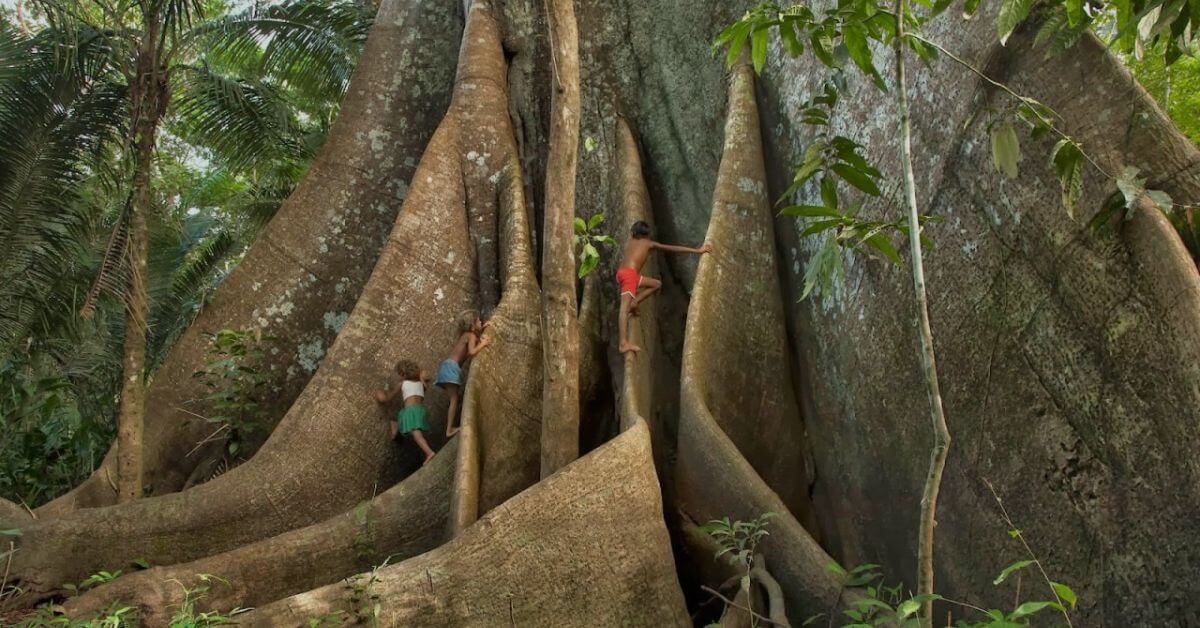
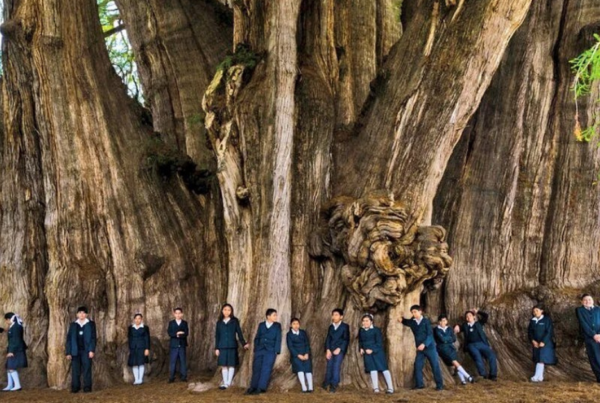
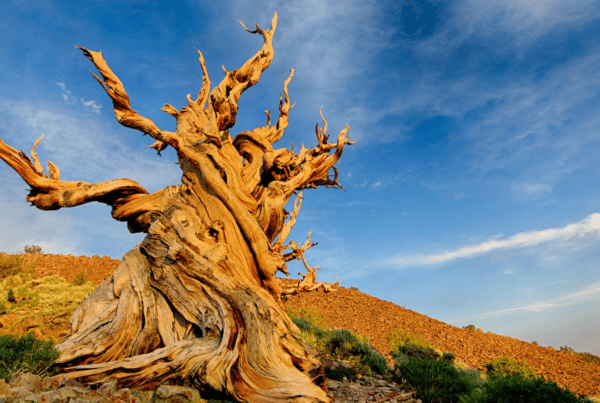




Thanks for this post – love looking at the crazy and awesome pictures. As an arborist, I found myself captivated by the awe-inspiring descriptions of these magnificent trees. The Rainbow Eucalyptus trees was my favorite. This blog post not only showcased the visually stunning aspects of these trees but also highlighted their cultural, historical and ecological importance. It left me with a deep appreciation for the incredible diversity and beauty of trees around the world. Thanks again for sharing this wonderful piece!!!
Espectacular, fuera de serie.
Sin palabras para expresar lo que siento en este momento.
Felicitaciones y gracias desde Santa Marta Colombia